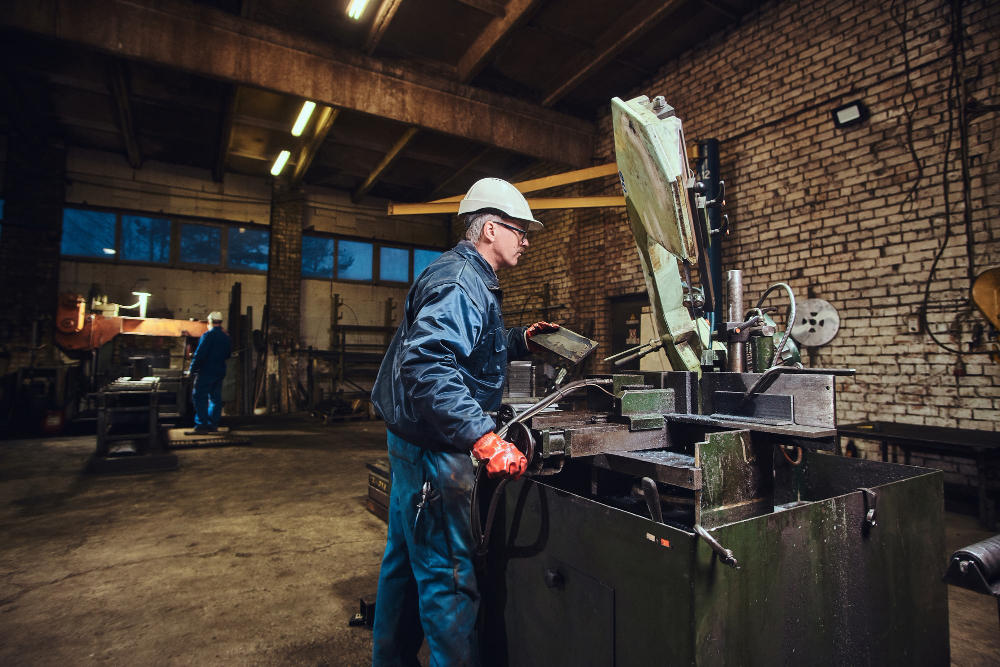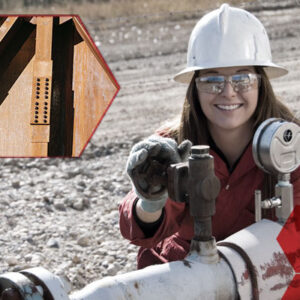The Science of Metal Degradation: How to Protect Your Assets
Corrosion, in most industrial applications, is the degradation of metal. That’s being challenged in infrastructure and machinery to name just a few examples of its wide existence. Knowledge and practice in protection will be paramount for ensuring integrity preservation of your assets. Here are some priceless tips from the CORCON Institute of Corrosion (CIC) on how to protect your assets against metal degradation:
Regular inspections and monitoring
Regularly inspect the metal structures and components for corrosion signs, as metal degradation can significantly affect their integrity. Perform corrosion monitoring through visual inspections, ultrasonic testing, corrosion probes, and other methods. Determine and document the condition of your assets; track and record your findings and trends over time to understand corrosion patterns related to metal degradation. Use this data to guide future maintenance and prevention policies.
Select Corrosion-Resistant Materials
One very crucial aspect of preventing metallic degradation is choosing the right material. Note corrosion-resistant alloys, stainless steel, or coated metals; generally, they can endure and withstand environmental factors. Incorporate life-cycle cost analysis in your material selection for the consideration of not just the initial cost but also even long-term benefits. The outcome will provide you with proper, investment-sustaining judgments that are more sustainable by safeguarding your investments.
Protective Coatings Need to Be Applied
Protective coatings refer to paints, galvanization, or polymer coatings applied onto the metal to create a barrier between the metal and corrosive agents. Apply the coatings properly and maintain them for maximum effect. Monitor the status of these coatings regularly and recoat as necessary to ensure that your assets continue to be protected. A good maintenance schedule will significantly increase the asset’s durability.
Use Cathodic Protection
Cathodic protection is an electrochemical process that protects against corrosion on metallic structures. This method involves the utilization of sacrificial anodes or an impressed current system to prevent the metal from corroding. Actually, it is advisable to meet with corrosion experts to assess your local site conditions for this will ensure that your chosen cathodic protection system may be used optimally. Checking the system further on its effectiveness is vital.
Control Environmental Factors
The environmental conditions contribute in some way to Metal Degradation. When possible, control factors like humidity, temperature, and exposure to corrosive substances. Install environmental sensors, which can detect these conditions on a daily basis and alert you when danger is present. Take proper care of the environment, and you shall be in an optimal, less corrosive atmosphere for your assets.
Regular Maintenance
A well-structured maintenance schedule is essential for preventing metal degradation and ensuring the longevity of your assets. Regular cleaning, timely repairs, and the replacement of corroded parts help avoid unnecessary depreciation and extend the life cycle of your equipment. Incorporating predictive maintenance technologies can further enhance this process by continuously monitoring the condition of assets and detecting potential problems before they become critical. Here’s an outline of an effective maintenance plan.
Train Your Team
Engage your team members in trainings and workshops on metal degradation awareness and prevention. Educating your team on the need for corrosion control and metal degradation may eventually lead them to become proactive in asset protection. Open a culture that allows your employees to bring in observations and concerns about corrosion and metal degradation. Empowering your workforce will improve asset management generally and help you have a more engaged team.
Use Corrosion Testing Methods
Test various forms of corrosion over time using diversified testing methods, such as salt spray tests or electrochemical impedance spectroscopy, to test the effectiveness of protective measures and materials. Testing over time can give you an understanding of corrosion rates and, hence, help hone your protective strategies. Utilize the findings from such tests to create a mitigative approach to corrosion that identifies and addresses the particular vulnerabilities of your assets. You can also keep track of the assessment so that similar judgments may be developed for future management decisions.
Adopt the Industry Standards
Effective asset protection would be keeping track of the latest standards and best practices in corrosion. That means attending seminars, conferences, and in-house training sessions conducted by the CORCON Institute of Corrosion and other industry associations. Interaction with the industry professionals will keep you informed and aware of workable solutions applied to common challenges. This will help you adopt ways and new regulations that try to change technologies aiming to enhance the capacity of an organization in the management of corrosion.
Association with Experts
Frequently Asked Questions
What is metal degradation?
Metal degradation refers to the deterioration of metals due to environmental or chemical factors, leading to reduced functionality and lifespan. The most common form of metal degradation is corrosion, where metals react with their environment, often causing rust or other damage.
Why is regular inspection of metal assets important?
Regular inspection is crucial to detect early signs of corrosion or damage. By identifying issues early, you can prevent major failures, reduce repair costs, and extend the life of your assets. Inspections also help in maintaining the effectiveness of protective measures like coatings or cathodic protection systems.
What role does material selection play in corrosion prevention?
Choosing the right materials is one of the most effective ways to prevent corrosion. Corrosion-resistant alloys, such as stainless steel, aluminum, or specialized coatings, can significantly reduce the risk of metal degradation in harsh environments. Material selection should be based on the specific environmental conditions and exposure to corrosive elements.
How can CORCON Institute of Corrosion help with corrosion testing?
The CORCON Institute of Corrosion offers various corrosion testing methods, such as salt spray tests, electrochemical impedance spectroscopy, and accelerated aging tests, to evaluate how well materials and coatings perform in corrosive environments. These tests help industries select the best protection methods and monitor corrosion rates.
Closing Insights
With these tips, you can reduce your risk of metal decay and then preserve your valuable assets. To know more about corrosion awareness and protection, contact the CORCON Institute of Corrosion (CIC). CIC is found in 2014, and they provide an area for training, education, and collaboration with industry leaders to enhance corrosion awareness and control. We can build a safer, stronger future against corrosion working together.
Image Reference: Freepik
Disclaimer: All trademarks, logos, and brand names are the property of their respective owners. All company, product, and service names used in this website are for identification purposes only. Use of these names, trademarks, and brands does not imply endorsement.




